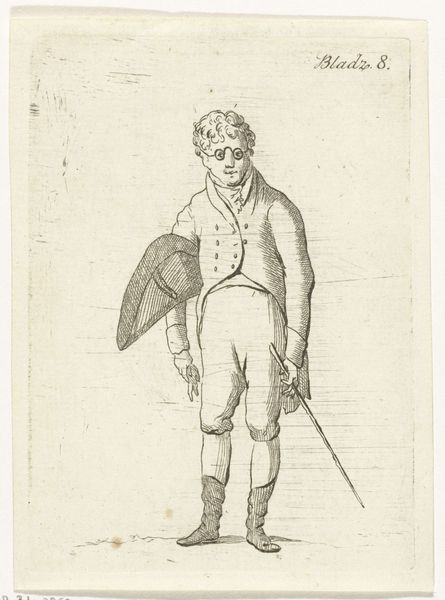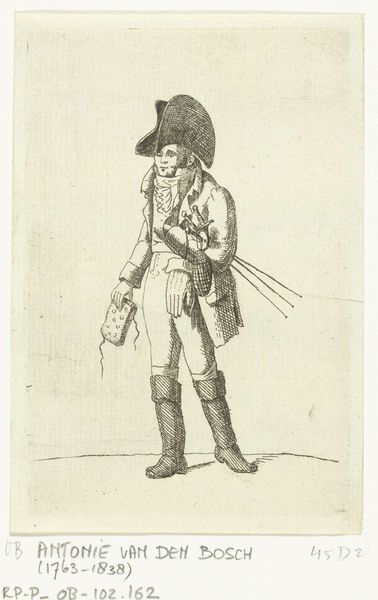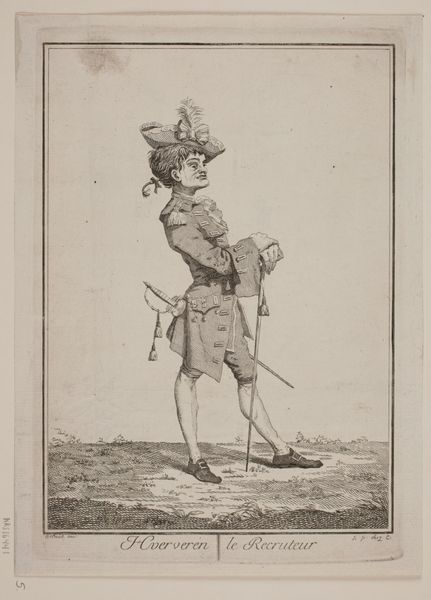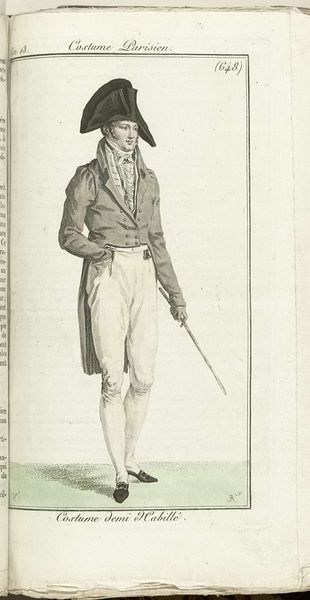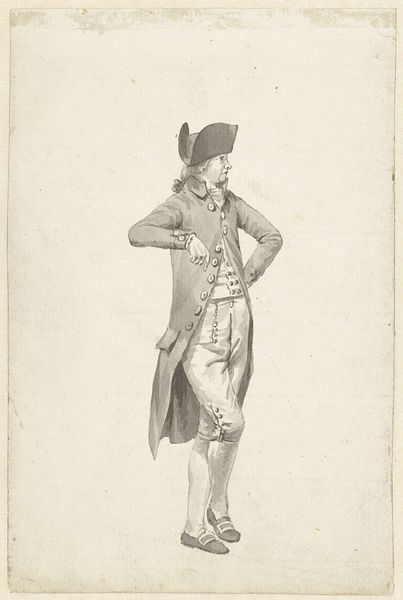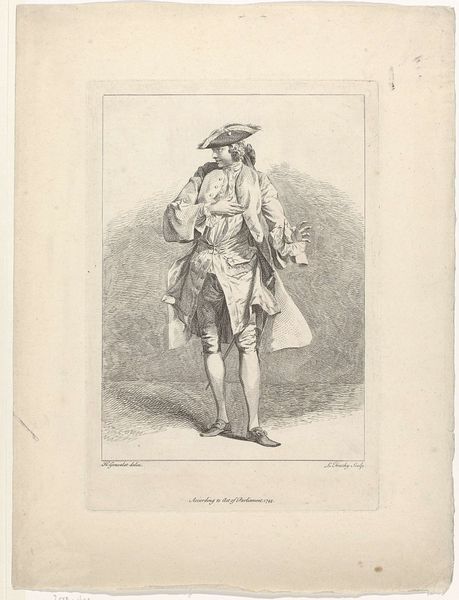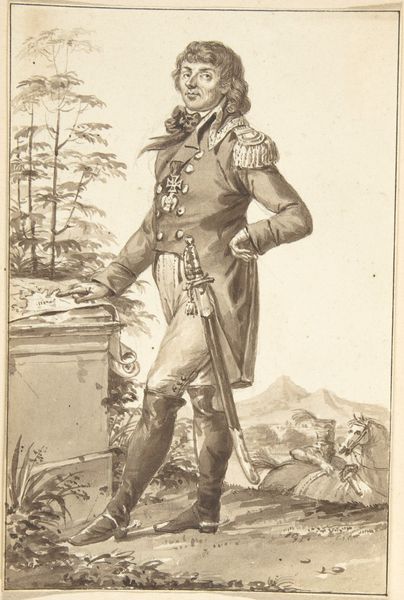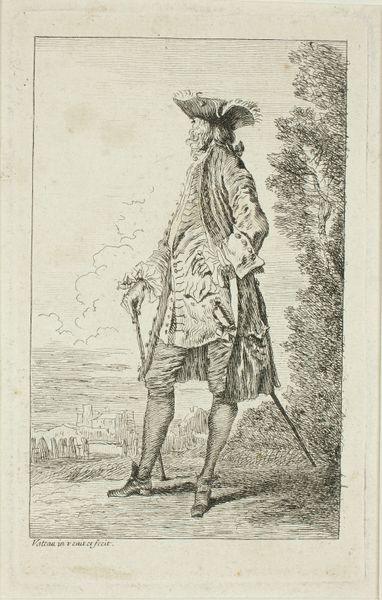
drawing, print, engraving
#
portrait
#
drawing
#
neoclacissism
# print
#
genre-painting
#
engraving
Dimensions: height 251 mm, width 168 mm
Copyright: Rijks Museum: Open Domain
Curator: Here we have "Landzaat, 1794," an engraving by Hendrik Willem Caspari. It's part of the Rijksmuseum's collection. Editor: My initial thought is… buttoned-up! Seriously, look at that high collar and all those buttons. It's quite formal, especially considering he's out in what appears to be a field. Curator: He’s an 18th-century militia man, so the uniform reflects the formal military structure of the time. Note the sash and the jaunty hat! The engraving captures the crisp detail favored by neoclassicism—a movement known for its order and rationality. It almost reads like propaganda, promising to reinforce control and civic responsibility in its subjects, although that is at odds with the turbulent social changes that led to the Patriot revolution a decade earlier. Editor: So, fashion as a symbol of power, huh? That neat and tidy outfit, in contrast with the dirt road...is there any indication of unrest beyond the uniform? I see his hand is on his hip with the staff as though it’s his last chance at maintaining military formality. He may as well be waiting for the real party to begin. Curator: The inscription suggests context: this is someone from the volunteer corps in Holland established that year. Think about the wider landscape. The French Revolution was underway, sparking debates about citizenship, nationalism and loyalty across Europe. Caspari's Landzaat represents a local response, with citizens organizing themselves—or, perhaps being organized—to defend their communities against revolutionary change. Editor: That’s helpful to remember considering how clean and pressed he is as a representation of a defender of local interest. So the print itself, with its medium's inherent ability to be reproduced easily, disseminated that image to rally others. Even the somewhat romantic landscape feels a bit strategic, almost trying to sell a sense of nostalgia. What’s more “neoclassical” than that? Curator: Absolutely. Prints like this served a very specific function in creating and solidifying political identities. The Landzaat wasn’t just an individual; he represented a whole ideology, and the print disseminated it through artful means. Editor: Seeing it that way reframes the experience of encountering this artwork, shifting the focus away from some man standing still in a field to questions of power and political engagement. Curator: Exactly! It shows us that even the most seemingly simple image is rooted in broader social and political dynamics.
Comments
No comments
Be the first to comment and join the conversation on the ultimate creative platform.
